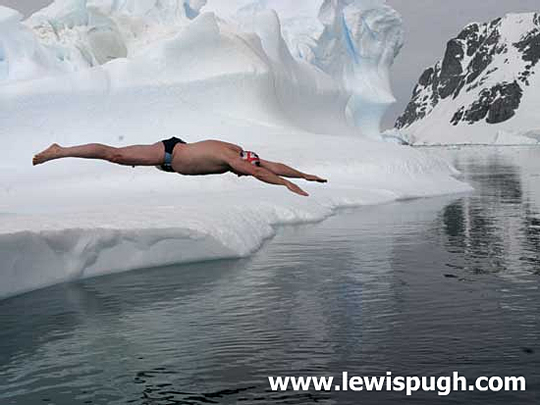Hi all,
Here is a good one from Simon Griffiths of H2Open magazine (thanks Simon!)… a bit of a switch from the previous post in Barbados! But something on a lot of people’s minds… okay, maybe not “a lot”… how about a “twisted few”. Yes… it’s crossed my mind too!
Cheers,
Rob
From an open water swimming perspective, this winter feels different. Previously, except for a few determined individuals, the ‘season’ effectively finished at the end of September. This year, a lot more people seem interested in continuing swimming outside for as long as possible.
Colin Hill, by setting up Chill Swim and the Big Chill swimming event in Windermere in February this year, is partially responsible for this (as he is also partially responsible for the growth in open water swimming generally through his time with Great Swim). Next year’s Chill Swim is already sold out with over 500 entries. That’s a lot of people prepared to travel great distances to immerse themselves in water of possibly less than 5 degrees Celsius. But some people want to go a lot further than the 60m sprints and 450m endurance challenge on offer next February.
Colin didn’t invent the concept of an Ice Mile (that was Ram Barkai and his pals at the International Ice Swimming Association) but he was one of the first to do one in the UK. An Ice Mile is defined as swimming a mile in water temperatures of 5 degrees or less. If you spend any time hanging around open water swimmers (either in person or virtually) you’ll almost certainly hear of people hoping to swim an Ice Mile this winter and talking joyfully of the distances they’ve swum at various low temperatures. As a result there is a danger of people under-estimating the risks involved in cold water swimming and trivialising a potentially deadly challenge.

On his Facebook page this week Colin posted a timely reminder that received a lot of positive feedback and support.
“When I swam my official Ice Mile, one mile in under 5 degrees (after ECG test and with medic and support team), I trained for two winters, competed in endurance 450m swims in under 5 degrees and kept quiet about it until I had done it, so there was no extra pressure on me to ‘have’ to do it. There are a lot of people now announcing on Facebook that they will do one and also egging other people on. Remember swimming one mile in less than 5 degrees is very different from swimming in 5 to 10 degrees. It shouldn’t just be the next thing to tick off. Please try out some shorter sub 5 degree swims first. Ask Jackie Cobell or other Ice Mile swimmers for advice, look on the Ice Swimming Association website and get experience under your belt first so you don’t rush into it.”
It’s worth searching out Colin’s Facebook page and reading through the many comments this post received.
In our blog we sometimes encourage people to try cold water swimming (see last week’s post for example). It is a very rewarding experience if done sensibly. But it can be very dangerous. The longer you stay in the water and the colder it is, the more dangerous it gets and the more precautions you need to take. The promoters of the Ice Mile concept recognise this and therefore insist on stringent precautions (including an ECG) being put in place before they will officially sanction an Ice Mile.
Last year at the Big Chill four swimmers attempted to swim a mile in 5.1 degrees. It didn’t qualify as an Ice Mile, but it was close. Three of the swimmers completed the mile but for those of us watching it was very painful to see Jack Bright, an experienced cold water swimmer, gradually slowing down, sinking ever lower in the water and eventually abandoning the attempt just 200m short of the total distance.
 The swim was closely supervised. Jack was helped from the water by a dry-suited lifeguard and stretchered into a heated emergency tent where he was looked after by a well-prepared and experienced medical team. Within a few hours he had made a full recovery but he was definitely shaken by his experience and had only a hazy memory of the end of the swim. You don’t want this to happen to you.
The swim was closely supervised. Jack was helped from the water by a dry-suited lifeguard and stretchered into a heated emergency tent where he was looked after by a well-prepared and experienced medical team. Within a few hours he had made a full recovery but he was definitely shaken by his experience and had only a hazy memory of the end of the swim. You don’t want this to happen to you.
At H2Open we want people to enjoy open water swimming in all its forms, including experiencing cold water. But we also want all our readers to stay safe. By all means set yourself a goal of swimming an Ice Mile, but take Colin’s advice, take your time to build experience and make sure you follow all the safety guidelines.
Picture shows Colin Hill swimming in Austria